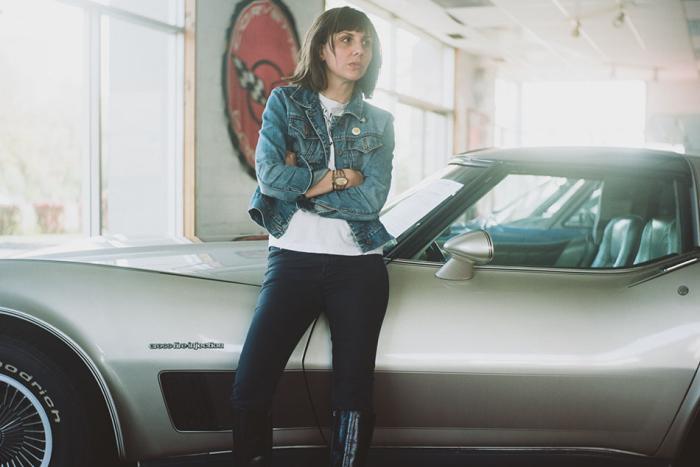“You’re having a conversation with yourself,” she says. “You play therapist to yourself and it becomes this emotional, personal, archival record.”
“Are you ever surprised by yourself when you look back on your journal?” I ask. She is. I ask if she’s a good writer in her journal.
“It’s very stream-of-consciousness,” she says. “There’s no continuity to it other than who wrote it. It’s not about that. It’s about processing what I’ve been through.”
Two years ago, I began seeing an analyst. I’ve seen many therapists in my lifetime, but Amier is my first—what Lynn calls psychodynamic—mental health care provider. I’m on the couch, facing away from him. I can’t see his face. But soon after I began meeting with Amier, I was forced to admit that I wanted to entertain him. I was afraid that the events of my life and my ideas about them weren’t enough to keep him interested. In my imagination, he was falling asleep behind me, and it was my task as an analysand to give him reason to stay awake.
I admit this to Lynn.
“Well, you know, you’re a really introspective person,” she says. “The only thing I can think would be boring, as a therapist, would be if someone didn’t really examine their issues deeply.”
“What if I’m not saying things in a very interesting way?” I say. “What if I’m not speaking very well?”
“It’s his job to come up with the questions to facilitate the conversation,” she says. “All you’re supposed to do is be honest. It’s not like anything has to be said in a certain way.”
*
I’ve kept a notebook since I was a child. As a younger writer, someone less embarrassed, less self-conscious, it looked much like a diary: the entries were dated, they were written in prose. They told a story, most of the time about what had happened that day, in school, or with my friends. I skimmed the surface. As I aged, my entries delved deeper and began to include secrets. I went through the terrible preteen and teenage years and then went to college, and the secrets got complicated. Somewhere around this time, I became afraid—of the impossibility of, as Amier says, saying everything; of someone reading what I’d written; or maybe of what it would feel like to read what I’d written, myself.
It’s here I’ll begin exploring the notebook: what it is and how we use it. I’m interested in the notebook’s use as a tool for analyzing creative processes, how a piece of life finds its way into art or not. But more than that, I want to know how the self arises in a notebook, or is hidden from it. If it’s a place for makers to work, then the journal is a notebook of the psyche, and in both cases, we are introspecting, attempting to make of the irrational mind something rational. We wake from dreams and write them out; make lists of loosely connected images; jot down ideas for future projects; write lovers letters we’ll never send.
Until recently, we have thought of others’ notebooks as private, to be shared with us only after people die, and only if—like Anaïs Nin’s diaries, like Susan Sontag’s journals and notebooks—they’re deemed important enough to publish as books. Advances in technology have made this no longer the case; ours is a culture out in the open. How do we represent ourselves when everyone is watching, or find pockets of privacy away from the public? How do we say—as Amier demands, as a journal demands—everything? What is filtered out, and why, and what do we use as filters?
All you’re supposed to do is be honest. It’s not like anything has to be said in a certain way.
The notebook is where our interior world makes contact with our exterior world; where our instinct for creation is first made material. Our notebooks are our first messy attempts at self-expression, and the ways in which we express ourselves are changing every day. I started to write this piece in my notebook. It’s something I seldom do anymore because I’ve grown so accustomed to using a computer. I feel impatient with my hand’s limited ability to keep up with racing thoughts, and with the impossibility of in-line editing. But I wanted to feel the long history of the notebook as a material object as I set out to write this. I opened to a fresh page, heard the first lines in my head, and started to write them. Then I scratched them out. I rewrote and rewrote them. I filled half a page, then I hated what I’d written, and took to the screen.
But still, I carry this notebook everywhere. For days, I’ll forget that it’s in my purse, and then suddenly I’ll need it, and rush to write something down that, very likely, I’ll never look at again. It’s as if the act of writing by hand impresses upon me something essential; and as if I have a need to impress upon the world, to feel that I too am material. When by chance I forget my notebook at home, I’m upset until I have it again that night. I wonder if others feel this way. Does my painter friend Timm feel this way about his sketchbook? Does my friend Dan, who designs buildings, feel this way? Why does Lynn, who doesn’t write for weeks, suddenly decide to pull her journal out of the drawer where it’s hidden and record longhand the events of her life? And why can’t I do that? Heidi Julavits says of her book The Folded Clock, written from her own diaries: “[The diary] is a space to be honest with yourself…to really start to get down to what drives you, what are your motivations.” But still there’s a sense of futility when I try to journal—a fear of introspection without productivity, without a tangible result.
I’ve had this current notebook since Thanksgiving—five months. The first entry is an idea I had for a novel, which came to me while watching a sitcom high at the house of a friend whose memoir I’ll someday ghostwrite, some notes for which exist in a notebook I kept years ago, when we first had this idea. I’ve almost filled this current one. Each page looks different; some are filled with research about Florida coastal ecosystems; some have small drawings, by me or by others; some early ideas for essays and stories; a few collages. The most recent entry is the outline for this essay. In it, the last paragraph of the second section appears as the opening. The third section did not make the cut, including a whole discussion of the appearance of my notebook. Most of this essay happened unplanned, but still, there’s invisible structure to this entry. It’s hovering somewhere above the page, or in the margins, and that is the magic the notebook provides.
The notebook is multiple—journal, sketchbook, blog—but it is personal and material. It’s where the middle-space of thought is made permanent; a catch-all, or catch-some. It’s a word that we all agree on—such is the social event of language—but with varying definitions. What is captured in this word notebook? What does it do for us as people? Though I’ve written very little this month while on tour for my novel Binary Star, or little that is finished, my notebook has been my companion, relegating my mind and my writing to a state of later: later, I will organize this; this is something I’ll need to know later. At a panel in Minneapolis, I jotted, Query subject from multiple points of view, and, Different pathways of thought disallow the text from settling. These will be my guiding principles on this exploration.
I’m glad to be starting this column on the road. The road is the best place to query the notebook because the road is time and space as fabric. It is the body in time and space, stretched thin and pinned to a moment that is always the present moment. It is an assertion that you are always right here, right in this place right now, though that place is always changing, though tomorrow you will be in another place that you can’t even imagine, an outcome that you can’t even imagine, that you cannot prepare for, that will thrust itself upon you suddenly. At every moment, you are creating. And the notebook is there to catch the debris experience, its unsettled pathways.






